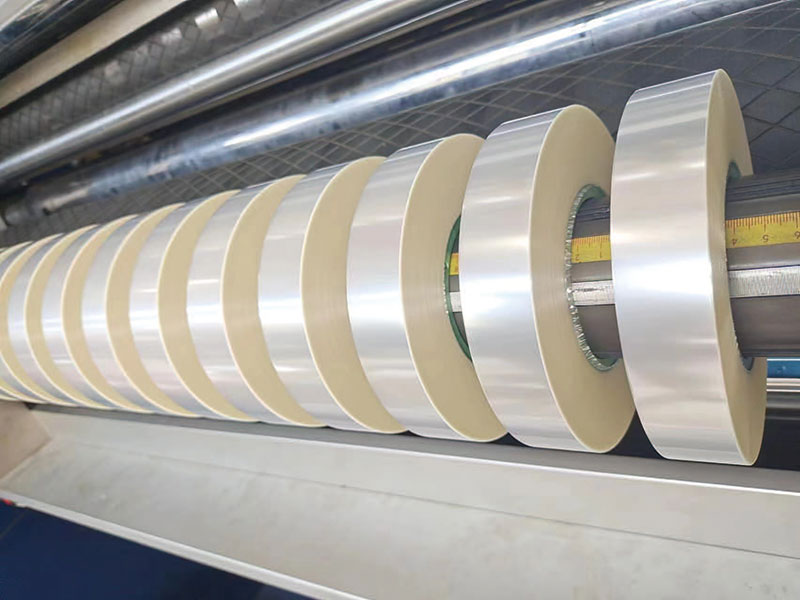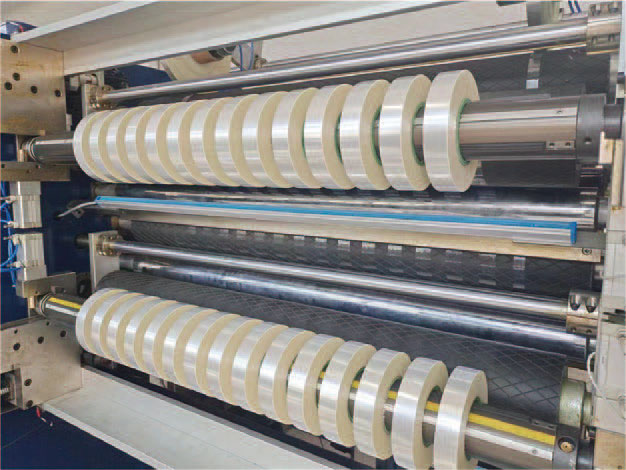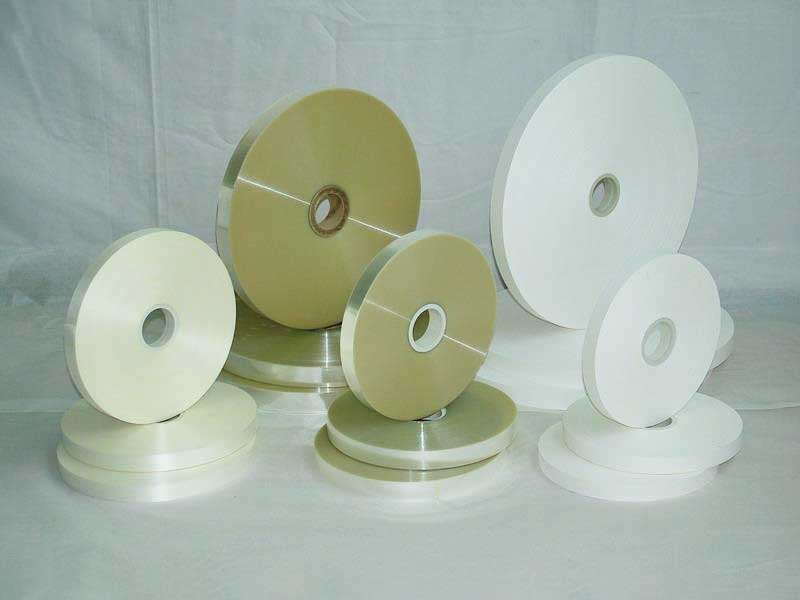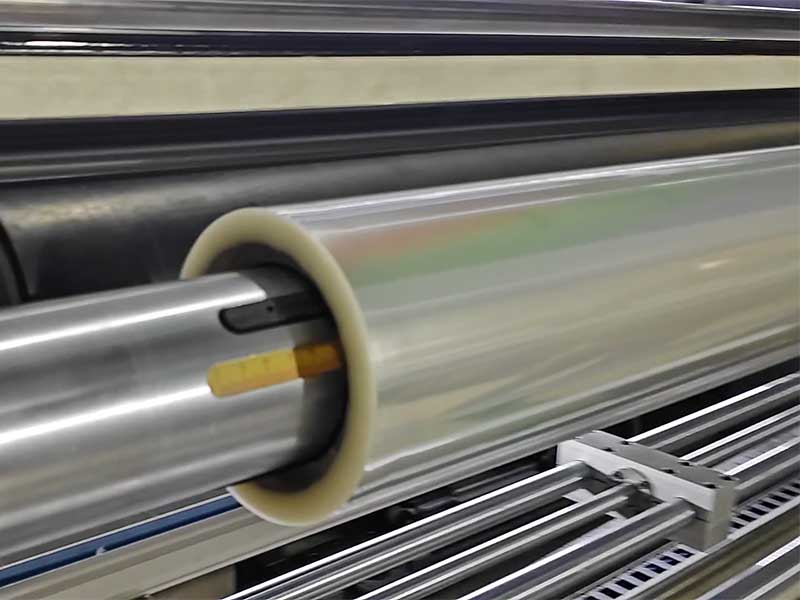The waste problem of the film slitting machine directly affects the production cost and material utilization. By optimizing slitting technology, equipment configuration and operation management, scrap generation can be significantly reduced and production efficiency can be increased. Here are the key solutions:
1. Analysis of the main sources of waste
The main sources of waste in the film slitting process are:
• Slitting edge scrap (scrap edges that must be cut off on both sides of the traditional slitting method)
• Slitting errors (scrap due to dimensional deviations, flashes, wavy edges)
• Uneven tension (film stretch deformation, wrinkles, serpenting, etc.)
• Roll change losses (waste film during stoppage splicing, acceleration/deceleration phases)
• Insufficient accuracy of the equipment (increased scrap rate due to tool wear, inaccurate correction, etc.)

2. Efficient slitting technology to reduce waste
(1) Zero Waste Slitting
• Ultra-narrow blade design (0.05~0.1mm thickness) to reduce cutting loss
• Staggered slitting knife set maximizes the use of film width and reduces waste edges
• Variable slitting width adjustment to accommodate different specifications without changing tools
(2) High-precision tension control system
• Closed-loop tension control (±1% accuracy) to avoid film stretch deformation
• Automatic Web Guiding (EPC) system, real-time adjustment of film position to reduce mistracking waste
• Constant tension winding to prevent rejection caused by uneven winding
(3) Intelligent optimization of slitting scheme
• AI Knife Arrangement Calculation: Automatically calculates the optimal slitting combination to reduce waste edges
• Visual inspection system: real-time monitoring of slitting quality and automatic rejection of defective sections
• Automatic splicing technology: no downtime for roll change, reducing start-stop loss
(4) Advanced tool technology
• Ultrasonic slitting (suitable for PE/PP and other soft films, no flashes)
• Round knife + air cushion technology (reduces friction and extends tool life)
• Automatic sharpening system (keeps the blade sharp and reduces slitting burrs)

3. Optimize operation and management to reduce waste
• Regular tool maintenance (reduction of flashes and wavy edges)
• Optimization of slitting parameters (speed and tension according to film material)
• Ambient temperature and humidity control (to prevent film deformation, 23±2°C is recommended, RH50±5%)
• Operator training (standardize operation and reduce human error)
4. Comparison of actual consumption reduction effects
| Technological Improvements | Conventional slitting scrap rate | Optimized scrap rate | Cost savings |
| Ordinary slitting | 5%~8% | - | - |
| Zero-waste edge slitting | - | 2%~3% | ↓30%~50% |
| High-precision tension control | - | <1% | ↓20%~40% |
| Intelligent knife row optimization | - | 50% reduction in waste edges | ↑ Material utilization rate 15% |

5. Conclusion: How to choose the best slitting solution?
1. Flexible Film (PE/PP) → Ultrasonic Slitting + Zero Waste Edge Technology
2. Rigid film (PET/BOPP) → Round knife slitting + automatic web tracking
3. Ultra-thin film (<20μm) → Air cushion slitting + constant tension control
Through the use of efficient slitting technology + intelligent management, the waste rate of the film slitting machine can be reduced to less than 1%, which greatly improves the production efficiency!

The intelligent control design of the new generation of film slitting machine represents the transformation of industrial equipment from "tool" to "partner".
20. December, 2025
Achieving continuous 1,000 hours of trouble-free operation requires not only systematic technical upgrades, but also all-round innovation from design concept to maintenance strategy.
20. December, 2025
In the face of a dazzling array of models on the market, how to make informed decisions when purchasing?
20. December, 2025
These film materials need to be precisely cut into different widths during the production process to meet the needs of various models and components.
10. December, 2025
The automotive film slitting machine, an increasingly intelligent "cutting knife", is accurately cutting out redundant costs, inefficient processes and backward production methods.
10. December, 2025